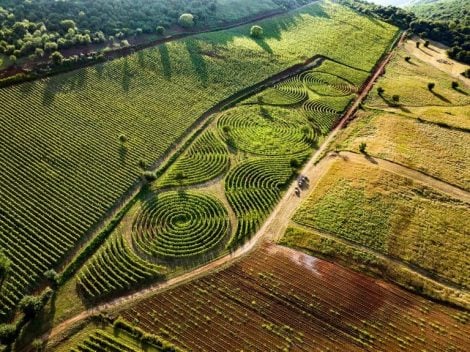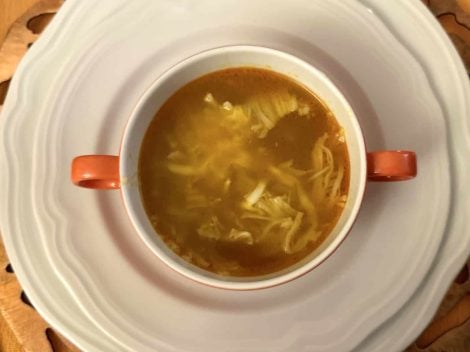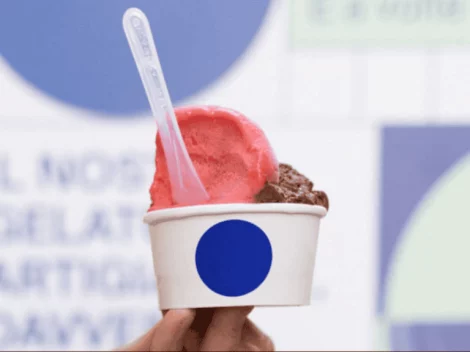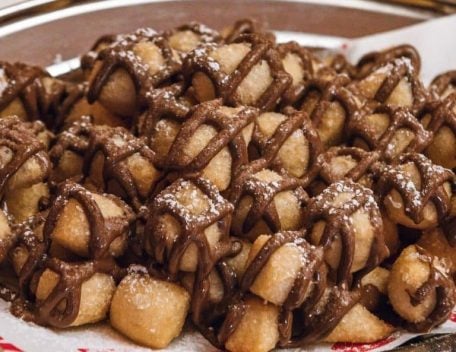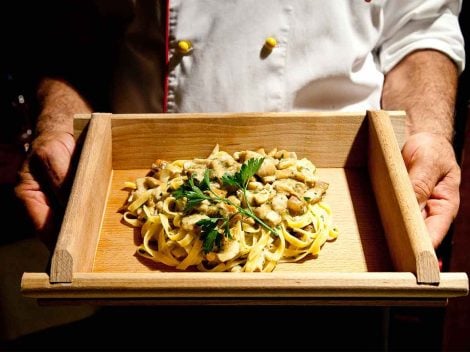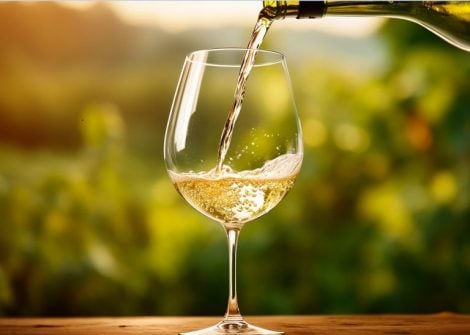Small flocks, barns, and pastures among the highest hills that become the Apennines. There are dairy productions in Romagna that tell authentic flavours and untouched landscapes. Tight-knit supply chains and wisdom, these are stories of families, often young, narrating a new possible path, that of the small scale leading to the highest quality, capable of also stitching the social fabric of places, countryside, or villages, keeping them alive, creating a new connection between the hinterland and the cities.
"Il Buon Pastore" - From Raw Milk to Wool. Montefiore Conca (Rn)
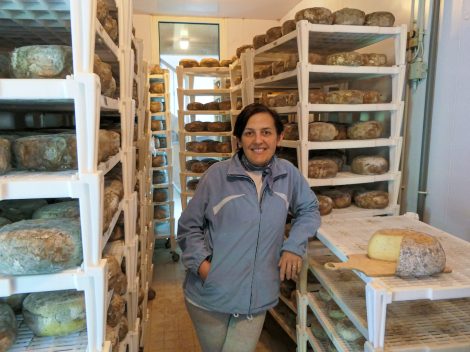
Buon Pastore - Annarosa Nonne in the cheese aging room photo by Mauro Monti
They left the city to save the family flock and became shepherds themselves. Annarosa Nonne studied mathematics in Bologna, Andrea Preci worked in the same city as a technician. Twenty years ago, they made the choice to climb the hills of Montefiore in Valconca, where Annarosa's father had arrived from Sardinia with sheep in the 1960s. However, they had a different idea: they wouldn't sell the milk from their animals, but they would make their own cheeses with raw milk.
Today, they have a flock of about 200 sheep, which Andrea takes care of daily, guiding them to pasture with their dogs, a necessary precaution because wolves are a concrete presence. Annarosa, certified organic, handles the production of ricotta, yoghurt, and cheeses. This year, she has also introduced the processing of the wool from their sheep. The sheep of "Il Buon Pastore" graze on the meadows of the surrounding hills during spring and autumn, surrounded by walnut groves and woods. For winter, Andrea prepares hay and cereals produced on the farm. "Il Buon Pastore" produces about ten types of raw milk cheese, including a caciotta with vegetable rennet obtained from the flower of the wild thistle collected on the edges of pastures. Each cheese has its season and is aged with aromatic or spontaneous herbs of the moment, such as wild fennel in spring or rosemary in winter, and in summer, even with straw. In June, walnut leaves are collected, and in August, they bury the cheese in Sogliano. Noteworthy is the production of Yo-bee sheep's milk yoghurt; the range is completed with a flavorful and aromatic blue cheese.
Since they respect the biological cycle of the animals, meaning in autumn when the sheep are dry, i.e., not nursing lambs, no cheese is made. Annarosa decided to use this time to close the supply chain and work with wool, an activity that has enriched their educational farm. "Wool today is considered a waste. We already did one shearing a year - explains Annarosa Nonne - to throw away as little as possible, we used it for mulching, and gave some to individuals who requested it for their own work. But for a while, I was thinking about how not to throw away even a tiny part. With 200 Sardinian and Lacaune sheep, we produce at most two or three quintals of wool each year. To start, I selected the best 150 kilograms and took them to a mill in Abetone, from which I came back home with 95 kilograms of skeins." Annarosa then started studying natural colorings and now dyes some of the finer yarn skeins with colours obtained by boiling flowers, acorns, and walnut husks to achieve various shades of brown, fig leaves for yellow, elderberries for indigo... The "recipes" for each colour are the result of much study and experimentation and are jealously guarded in a little book that documents thread by thread, "Il Filo del Buon Pastore." "Wool is an ancient product, but it's as if it were new: few today know how to use it, and the demand needs to be recreated. For us, it completes a sustainability story that we wanted to start by making our cheeses," they say on the farm.
Azienda agricola Il Buon pastore via Ca' Santino, Montefiore Conca 0541 985874 - 335 8074499.
"Olivia" - The Matriarch of Free Goats. Gemmano (Rn)
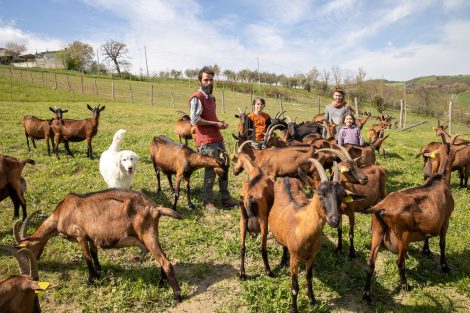
Olivia, the story of a goat, with Federico, Lia, and their children Vincenzo and Gea grazing. Photo by Mauro Monti
Olivia is the mother of the first 32 chamois alpine goats that Federico Arenzani and Lia Conti, he from Piedmont and she from Rimini, raise among the caves and pastures of the Onferno nature reserve. Here, they started their farm dedicated to the matriarch a few years ago, calling it precisely "Olivia, storia di una capra" (Olivia, story of a goat). Federico and Lia met as WWOOFers, working guests, at Fattoria Mafalda in Umbria, where Olivia lived. Becoming a couple, then a family, Lia and Federico did not have land and were not from farming families; now they have their goats in Gemmano, where they bought a stable and pastures, even before their house. In September 2020, for a while, they slept in a trailer while bringing the first daughters of the goat Olivia here to start their adventure. When the house also arrived, a short walk from the stable reached through a grove following the stream, they started cheese production, relying on a nearby dairy.
The goodness of their cheeses begins with the biodiversity of the meadows maintained through rotational grazing. "On about nine hectares of meadow, of which two are within the reserve of the Onferno park, and where the organic conversion period is about to be completed, I fence off one portion at a time - explains Federico Arenzani -. Here, I leave the goats to graze until there is grass available to them, then I move them to another fenced portion. This way, the animals always have fresh grass and a good variety of essences, while the meadow, fertilised by the presence of the goats, has all the time to regenerate." The double daily milking of the goats then provides Lia with the milk to produce her raw milk cheeses. The freshly milked milk is kept at room temperature for 24 hours, favouring acid coagulation with its own whey during the first 12 hours, then completing the fermentation with homoeopathic rennet for another 12 hours. "This technique is used particularly in southern France but also in Piedmont for fresh goat cheeses that age very little or for robiola," explains Lia Conti. Fresh goat cheeses are the flagship of the farm, but they also produce yoghurt, a fresh cheese, some forms of blue cheese, and tomes that age until autumn to have a product even when the goats are dry and no cheese is made.
Azienda agricola Olivia, storia di una capra, via Ca' d'Orazio Gemmano (Rn) 3387419021
Mountain Buffaloes at Fattoria Trapoggio. Santa Sofia (FC)
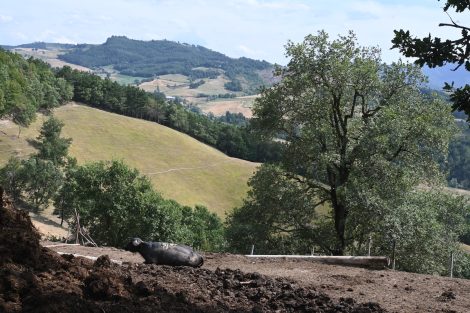
Fattoria Trapoggio, buffalo at pasture. Photo by Riccardo Liberini
First, you need to venture into the woods, climb to the top, and then widen your view again on the pastures to reach Fattoria Trapoggio, which has been there, at the top of Val Bidente, in the municipality of Santa Sofia, since 1929. The Boscherini family has been raising animals and making cheeses since then. The farmhouse on the edge of the road, understandably not very busy, contains the small dairy inside, while from the garden, a playground for children and home dogs, you reach the stables and chicken coops that directly overlook the expanse of meadows and woods as far as the eye can see towards the Casentino valley.
There, goats and sheep (about a hundred), cows (twenty), and buffalo (ten), all for milk only, graze together. "Buffaloes arrived as an experiment by my uncle - explains Jenny Boscherini - about ten years ago. Then they found themselves well here, and so we expanded the family. Not only do they produce phenomenal milk, but they are also very intelligent animals that interact with each other and even with humans in an incredible way." Each contributes to the farm; Roberto, the father, in the stable and in the pasture; mothers and daughters in the laboratory. Today, it is Jenny, the fourth generation working on the farm, together with her mother Denise Drei, who passes on the knowledge learned from her grandmother Pia in cheese production. "Once, nobody knew us, then when I was young, those from Eni who were digging for oil came to work in the valley - explains grandmother Pia -. They had heard that we made cheeses, and they came to buy them. The word of mouth must have started from there; now, many people come." In the meantime, Fattoria has started attending markets in the surrounding valleys, supplying renowned chefs like the Michelin-starred DaGorini in the parallel Savio valley, and recently opened a shop in the village of Civitella.
Fattoria Trapoggio currently produces mixed and goat ricotta, squacquerone, raviggiolo from the Slow Food Presidium, stracciatella only in summer, bazzotto (a typical Romagnolo cheese), caciotte, a semi-seasoned with the three milks of cow, sheep, and buffalo. Specifically with buffalo, they produce the aged "Big" and a creamy and tasty bloomy rind cheese; with sheep's milk, there's the blue cheese, while some caciotte are also buried in Sogliano. Applaudable is the buffalo milk yoghurt.
Fattoria Trapoggio, via Forese Trapoggio Sp 26 Santa Sofia (FC) 388 3497235
"Raviggiolo" - A Family Tradition at Il Boschetto. Premilcuore (FC)
Climbing the Rabbi stream, one quickly abandons the more common idea of Romagna made up of the coast and gentle hills; here, one is in the mountains. Forests and meadows are the habitat of the Cucchi brothers who run the Il Boschetto farm, particularly the stable, because the cheese dairy is managed by their mother Paola Galasi, a true expert in raviggiolo production, the soft and fresh cheese typical of this valley, as well as that of the Bidente, a Slow Food Presidium.
Today, about ninety red pied cows and some white Romagna cows graze at the Il Boschetto farm. From cereals to hay, everything is produced on the farm using organic methods, and the cheeses that come out of the small family dairy are also organic. "Raviggiolo must be gently fresh, almost buttery, and have its typical hazelnut scent - Stefano and Lorenzo explain -. For this, the ideal forage is from stable meadows, i.e., spontaneous ones and for us, in some cases, even centuries-old ones."
Haymaking here is a job that takes up the whole summer, and the Cucchi family works about 50 hectares of grassland and alfalfa fields with a view of Mount Falterona to make hay, thus ensuring full autonomy. Paola Galasi, mother of Stefano and Lorenzo, who learned how to make it from her own mother and mother-in-law, takes care of the raviggiolo. She produces it twice a week; traditionally, the milk was processed raw until March; now, production continues throughout the year, with pasteurised milk. What characterises this cheese is the use of the fern leaf, which is already collected dry in the woods in November. The leaves are then boiled, and one is placed at the bottom of each raviggiolo basket. "It is used to drain the whey - explains Paola Galasi - but the fern is also attributed to an antibacterial action that helps preserve the product, an ancient, perhaps unconscious, use that has been passed down." The Premilcuore dairy also produces a fabulous ricotta, yoghurt with fresh seasonal fruit, and some aged forms.
Azienda agricola Il Boschetto, località Ontaneta Premilcuore (FC) 389 2642357
"Il Satiro" - Two Brothers and the Return to the Countryside. Novafeltria (Rn)
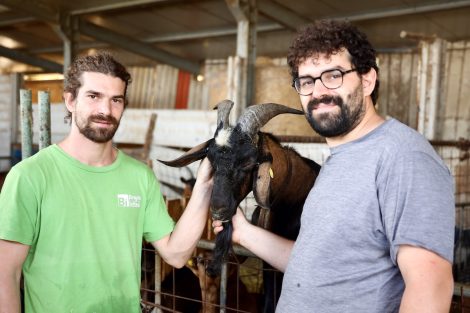
Satiro, Lorenzo and Nicola Brighinella. Photo by Mauro Monti
Two brothers and the desire for a life change born during the pandemic. Nicola and Lorenzo Brighi had different training and jobs; today, together, they produce goat cheeses, with the future goal of also having cattle.
Nicola, the older brother and the commercial director of the family windows and fixtures company, and Lorenzo, a musician, have divided the tasks of the "Il Satiro" farm that they started in Alta Valmarecchia, on the edge of a forest, between Novafeltria and San Leo. Nicola, with his strong commercial experience, focuses on the administrative and sales part, while Lorenzo takes care of the goats, daily milking, and cheese production. "During Covid, I thought I had to change something in my life and get back in touch with nature. When we were kids, my brother and I often went to the countryside to my grandfather's; everything must have started from there - Nicola says -. So I sold the apartment in the centre of Rimini and bought the house and first plots of land in the hills. Then, immediately after, came the stable and the goats. We started with a clear idea: to do something good for our lives but also for the environment and all the people around our farm. And, of course, good products."
Today, about sixty chamois alpine goats, Santina, Cindy, Berta, Nina, Smilza, Punk, Sminchiolina, and others, plus the buck Anubi, graze in the stable meadows and also in the Uffogliano woods above the dairy area, where another barn is already under construction to house a small number of cattle and a tasting room. "Being able to live freely also guarantees goats better health - explains Lorenzo - in fact, we don't use antibiotics, and they need few treatments. If necessary, we resort to natural methods, which have been enough so far." For cheese production, they didn't improvise; Lorenzo attended the International Academy of Cheese Art by Carlo Piccoli and toured Italy visiting other goat breeders and cheesemakers. Today, he produces excellent ricotta, fresh goat cheeses, also flavoured with pepper and elderflowers, a bloomy rind creamy cheese, raw milk caciotte with different levels of ageing, also refined in hay and black tea, a semi-cooked large-shaped aged cheese. A goal: goat raviggiolo.
Azienda agricola Il Satiro Località Uffogliano 150 Novafeltria (RN) 388 6329610
By Laura Giorgi
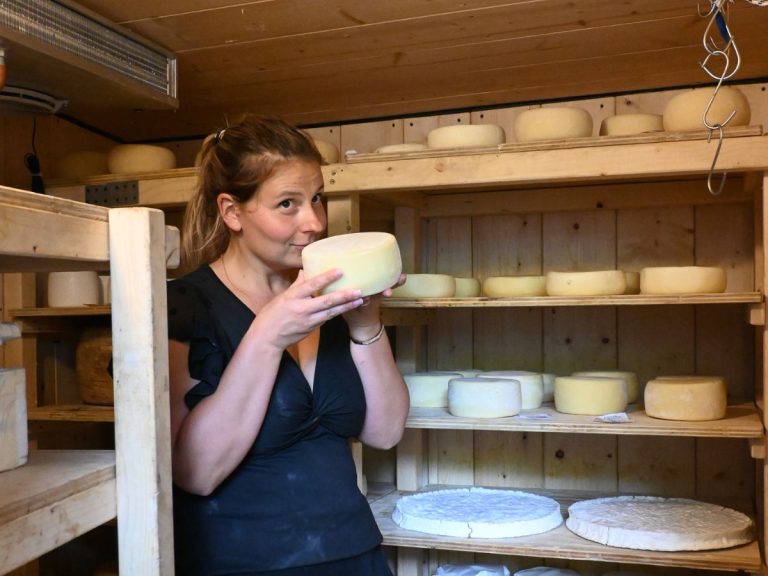
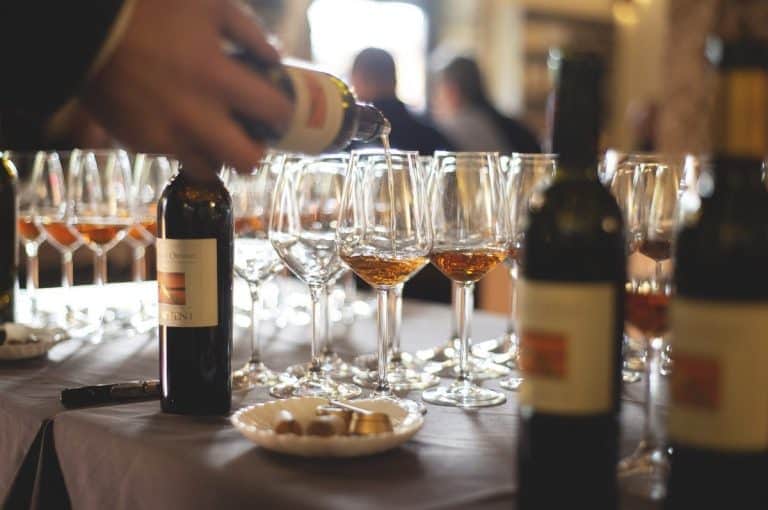 The 6 best Vernaccia di Oristano selected by Gambero Rosso
The 6 best Vernaccia di Oristano selected by Gambero Rosso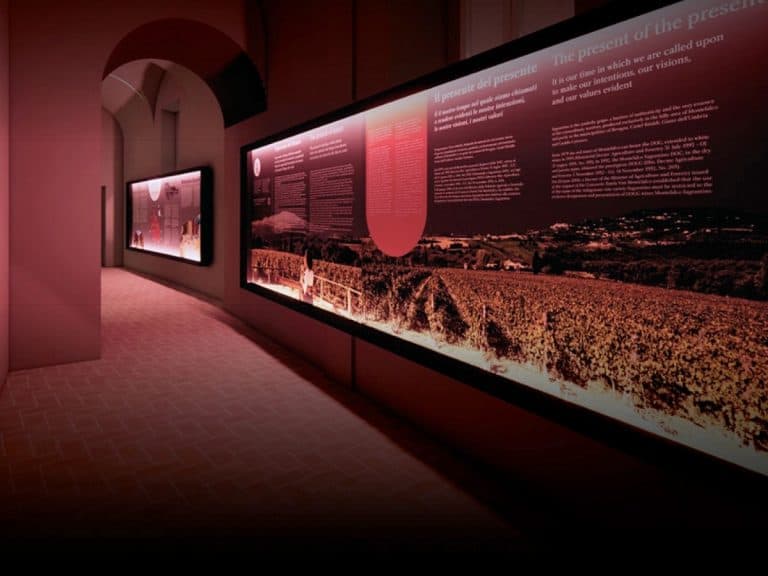 In the hidden caves of Montefalco, a museum dedicated entirely to Sagrantino is born
In the hidden caves of Montefalco, a museum dedicated entirely to Sagrantino is born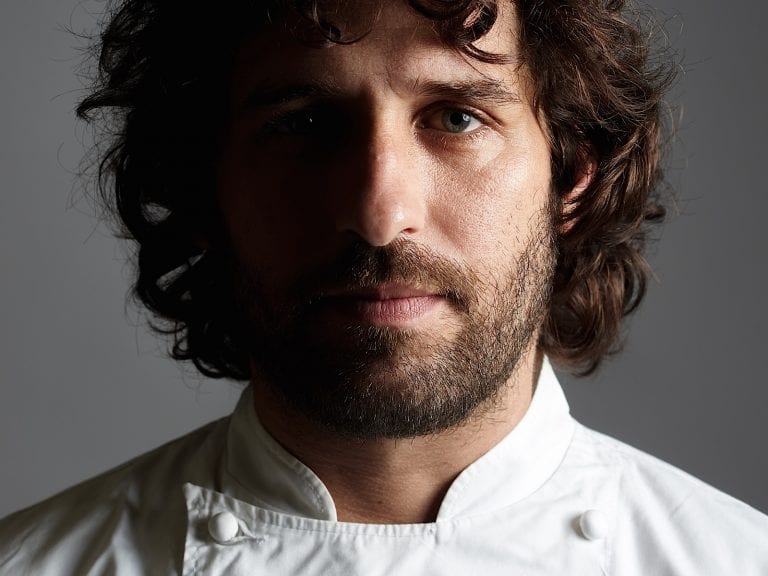 The small revolution of Contraste in Milan that changes everything. For Matias Perdomo, it's time for a new maturity
The small revolution of Contraste in Milan that changes everything. For Matias Perdomo, it's time for a new maturity The Cabernet Sauvignon with the best value for money selected by Gambero Rosso
The Cabernet Sauvignon with the best value for money selected by Gambero Rosso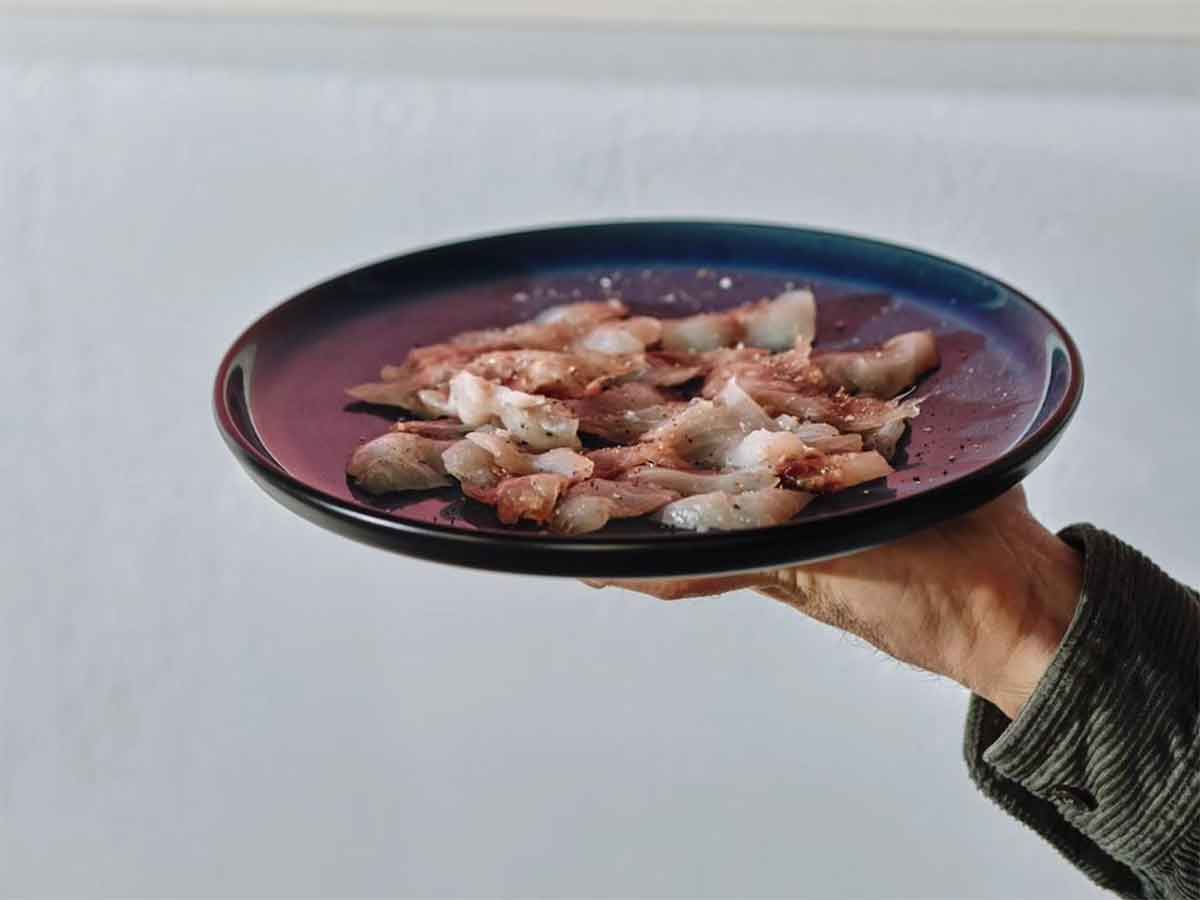 In Ostia, a contemporary trattoria opens with the dream of seeing the Roman coastline revive
In Ostia, a contemporary trattoria opens with the dream of seeing the Roman coastline revive